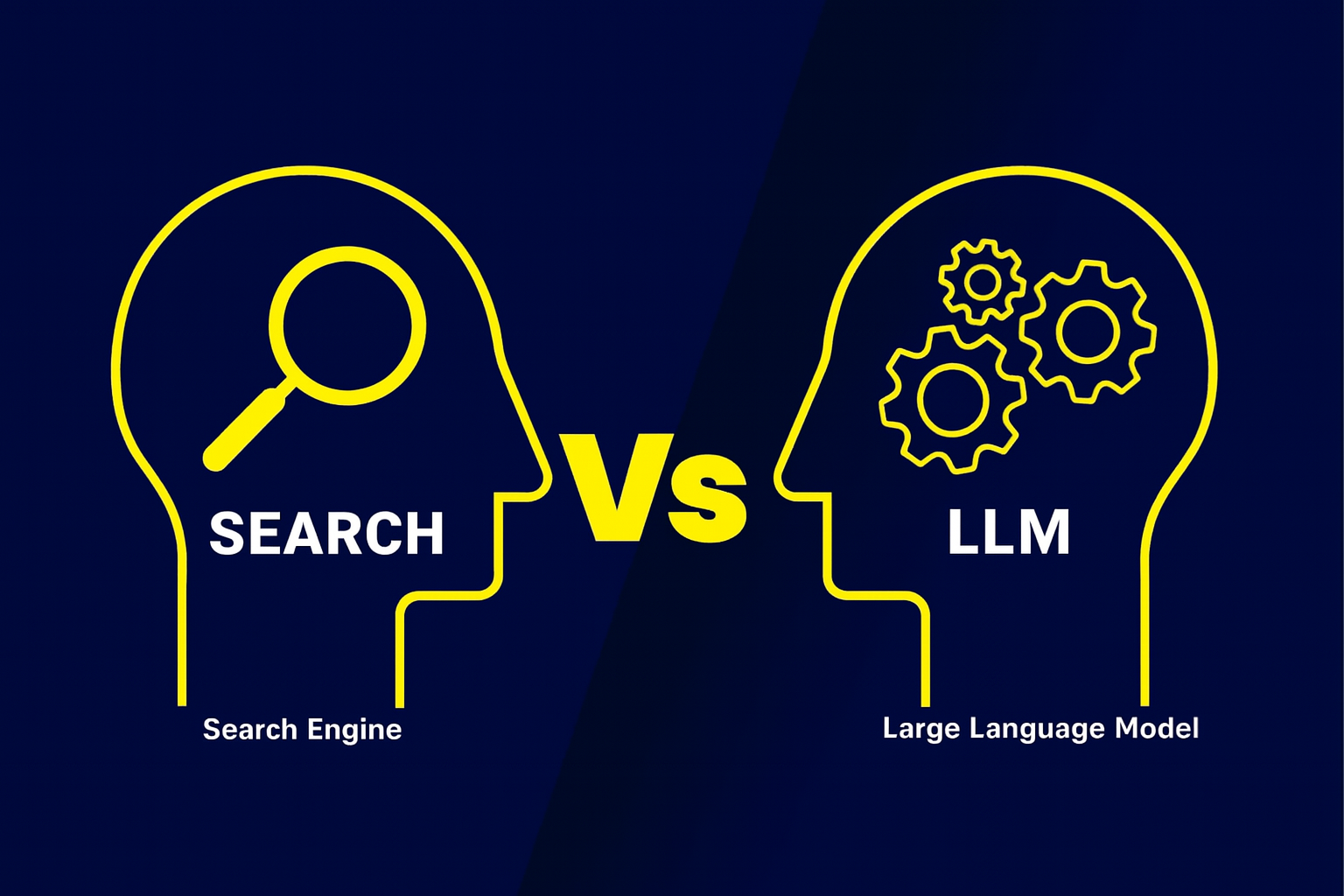The New Nexus
A Systems Thinking Perspective on Search, LLMs, and the Future of Information Discovery
A Comparative Analysis
While both serve to access information, search engines and LLMs operate on fundamentally different principles. This section breaks down their core functions, strengths, and business models.
Traditional Search Engines
Core Function: Retrieval
Operates like a global library index. Its primary job is to find and rank existing documents (web pages) from the internet that are relevant to a user's keyword query. It points users to information.
Key Process: Crawl, Index, Rank
Search engines continuously use automated 'spiders' to discover (crawl) web content, organize it (index), and then evaluate it against hundreds of signals to determine the most relevant order (rank) for a given search.
Monetization: Pay-Per-Click Ads
The economic model is based on advertising. Businesses pay the search engine when a user clicks on their sponsored links. The entire model is funded by diverting user attention to external websites.
Large Language Models (LLMs)
Core Function: Synthesis
Operates like an expert that has read the library. Its primary job is to understand a user's prompt and generate a new, synthesized answer based on the knowledge learned from its vast training data. It creates the information.
Key Process: Pre-train, Fine-Tune
LLMs are first trained on a massive corpus of internet data to learn language patterns (pre-training). They are then refined on smaller, curated datasets and with human feedback to become helpful and safe assistants (fine-tuning).
Monetization: Utility & Subscriptions
The economic model is based on the service provided. Users or developers pay directly for using the AI's capabilities, either through per-use API fees or monthly subscriptions for premium features.
Strengths & Weaknesses
Primary Monetization Models
The System in Motion
Information discovery is a complex ecosystem of interconnected actors and forces. This diagram maps the key feedback loops that govern its behavior. Click the buttons to highlight and understand each loop.
Select a loop to learn more
Strategic Crossroads
The integration of AI creates immense opportunities and existential risks. Different players are navigating this landscape with distinct strategies based on their market position.
Risk: Revenue Cannibalization
AI's direct answers lead to "zero-click" searches, threatening the Pay-Per-Click ad model that funds Google.
Risk: Quality & Model Collapse
If AI devalues original content by not sending traffic, publishers may stop creating it.
Risk: Antitrust Scrutiny
Regulators are concerned that incumbents are using their vast, proprietary search data to gain an unfair advantage.
Recommendation: Diversify Monetization
Incumbents must aggressively build revenue streams beyond the click, including premium subscriptions.
Recommendation: Leverage the Data Moat
Using their massive, real-time search index to ground AI answers (via RAG) is a key defensive advantage.
Recommendation: Rebuild the Creator Loop
To prevent model collapse, platforms must create a new value exchange with publishers.
Conclusion: Evolution, Not Extinction
The report suggests a more nuanced reality. The system is not collapsing but increasing in complexity and adapting toward a new equilibrium.
Interact with the toggle to explore both sides of the argument.
